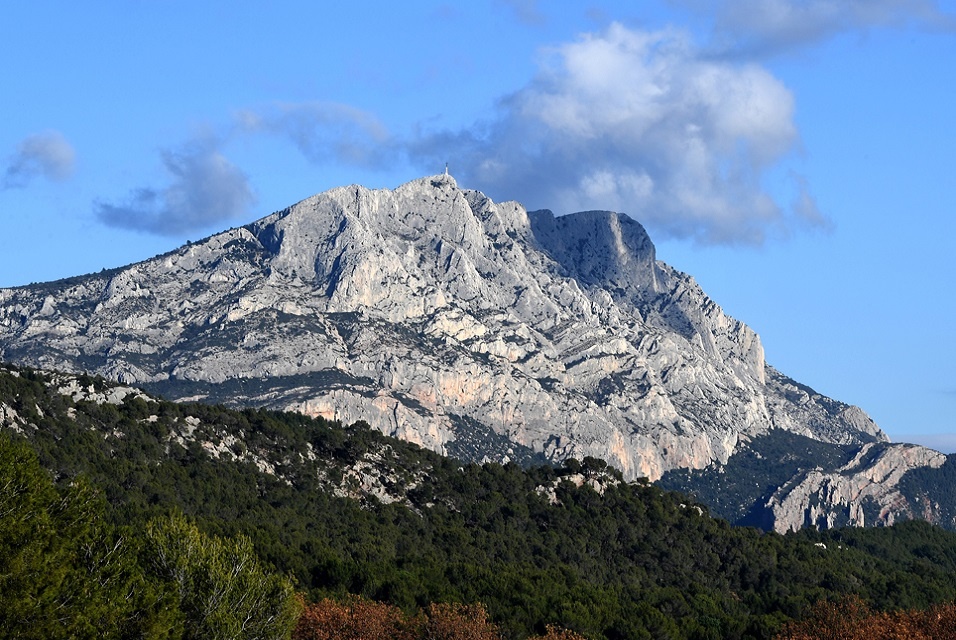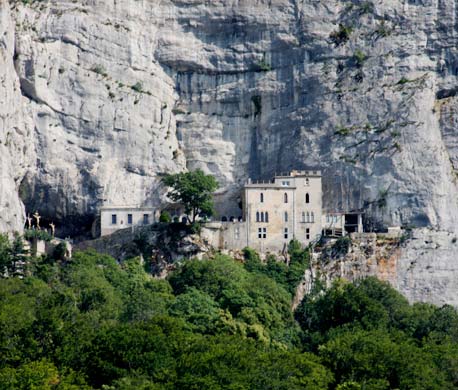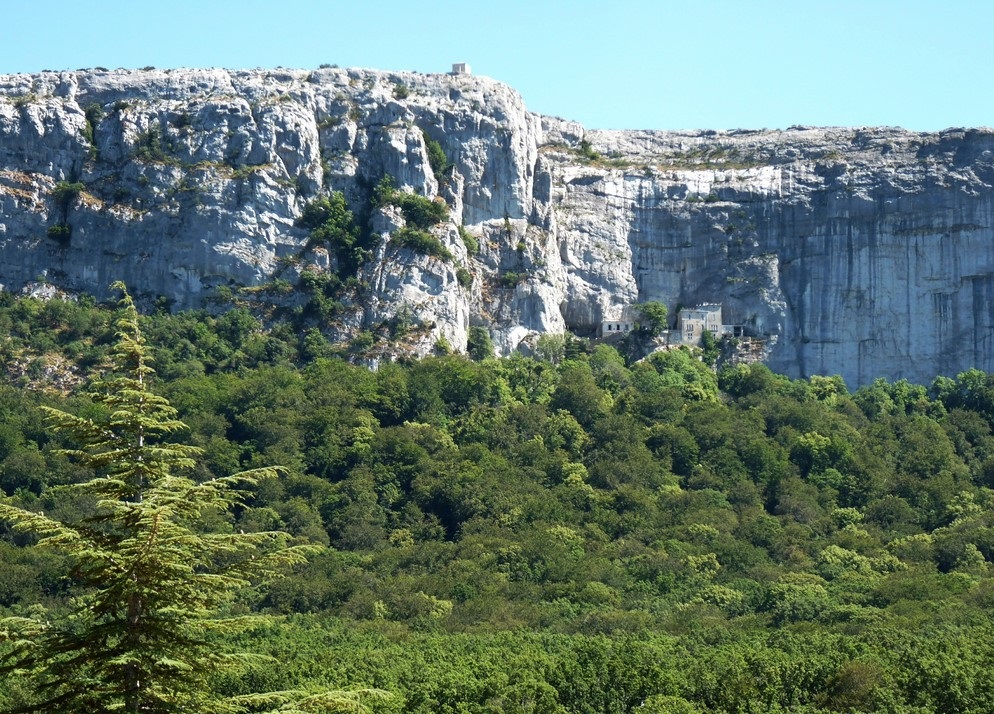
The Provencal mountains
part from the plain of the Durance, a few valleys and plateaus, Provence is a country of mountains: Mont Ventoux, Monts de Vaucluse, Alpilles, Luberon, Montagne de Lure, Sainte-Victoire mountain, Massifs of Sainte-Baume, des Maures, Esterel, Chaîne de l'Estaque… All of them offer tormented, wild, changing, fascinating landscapes.
« What enthusiasm, what an imperious thirst for sunshine, and what melancholy, in the evening, when all this heaviness subsides. »
Cézanne, Correspondance
Sainte-Victoire Mountain
The Sainte-Victoire mountain is known around the world thanks to Cézanne. Pink, blue or white, its high cliffs dress in the colors that the sky sends back to it. They give off an indescribable power. Presenting an elongated shape, a sort of dragon’s spine, with rocks folded into scales, it can be recognized from afar.
Tradition has it that the famous mountain, as powerful as it is bare, takes its name from the victory of Marius over the Teutons invaders in 102 BC In fact, the name of Victoire is, more likely, like that of Mont Ventoux , the transformation of the word Venturi, which would formerly have designated in Provence a sort of Celto-Ligurian god of the mountain, Christianized in the form of Saint Venture whose chapel occupied the summit for a moment.


The Sainte-Baume massif
The Sainte-Baume massif takes its name from the cave, baumo in Provençal, that it contains at its summit, where Marie-Madeleine took refuge for nearly thirty years. Before adopting its Christian name, the massif was called “Gargare” after Garganos, the Celtic hero who inspired Rabelais to become Gargantua. Huge mineral and plant creature, rocky and wild outgrowth, the Sainte-Baume massif is an enigma. 35 million years ago, enormous thrusts of the earth’s crust loosened the limestone sediments deposited there for nearly 200 million years. A whole section of the mountain has turned, creating a huge barrier several kilometers long. The lower layers are now at the top of the mountain which offers a steep face to the north, deprived of sun during all the winter months. Four rivers have their source there, one hundred and eighty underground chasms and rivers hollow out their galleries, and thousand-year-old trees grow there.
A sacred place since Antiquity, humid, dark and mysterious, the Sainte-Baume massif contrasts with the traditional aspect of the Provençal mountains. Its relic forest or sanctuary forest is the last vestige of the forests that covered the region ten thousand years ago. Forest impenetrable in the sun, it contains species that are totally unusual in such a latitude: beeches, lime trees, white oaks, maples, dogwoods, yews, sycamores, ivies and holly. The Greeks came there to take wood for their ships. They had dedicated her to Artemis, goddess of wild nature and fertility. A few centuries later, the Romans, including the Latin poet Lucain, described it as the terrible sacred forest of the Ligurian peoples.

